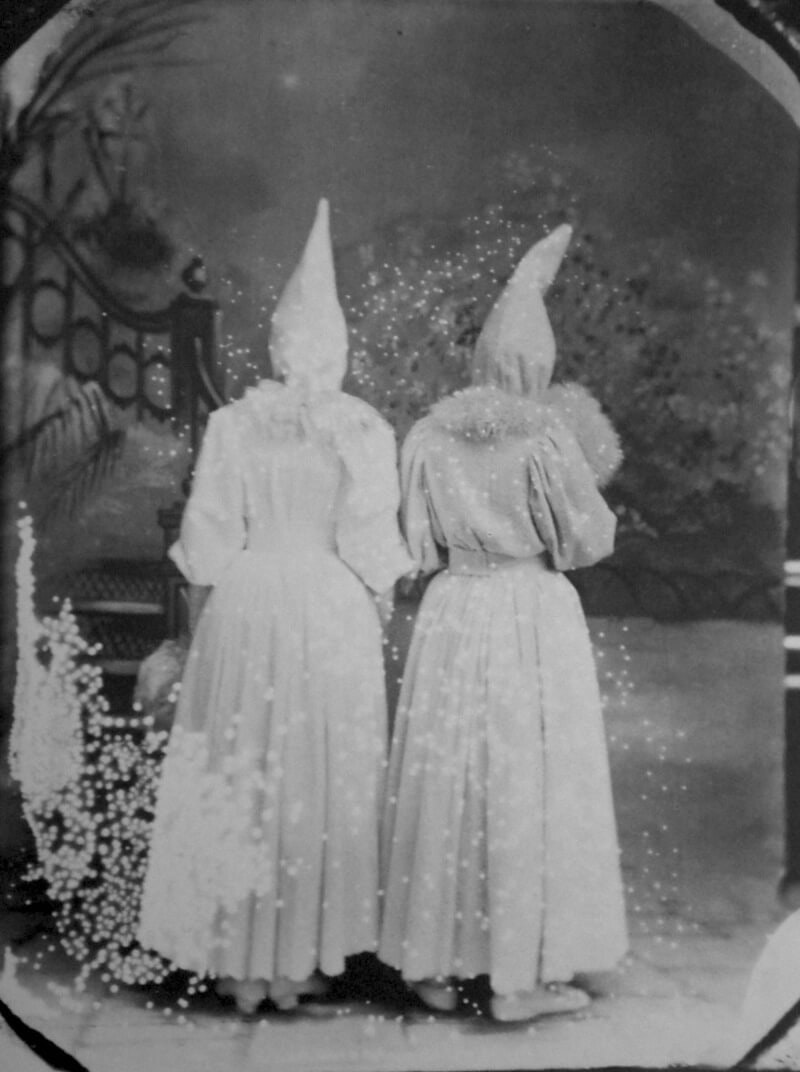I once heard the Midwest described as the birthplace of psychopaths. I’m from Wisconsin (we’ve had some Class-A serial killers), and even as a kid I sensed a dark undercurrent to our clean Midwestern image.
The book Wisconsin Death Trip came out in 1973, when I was a student at the University of Wisconsin. It was a collection of black-and-white photographs and newspaper clippings from the late-1800s assembled into a ghoulish coffee table-sized book by graduate student Michael Lesy. Fifty years later, Death Trip has a cult following. It has inspired operas, the name of a Static X album, and become a creepy docudrama. It was the subject of a feature article in December's Vanity Fair.
This strange book came about somewhat accidentally. Back in the 1970s, Lesy discovered a few thousand turn-of-the-century glass plate negatives housed in the archives of the Wisconsin State Historical Society. The negatives had belonged to commercial photographer Charles Van Schaick (1852-1946) and sat undisturbed for 30 years. Van Schaick had worked in and around Black River Falls, Wisconsin during the late-Industrial Age, making portraits of country people. He photographed them in their parlors, in front of stores, in saloons, in labor camps, and caskets. Van Schaick’s haunting black-and-white faces captivated Lesy, who decided to research the archives of the local newspaper, the Badger State Banner, during the same period. Death Trip is a brilliant amalgam of these photographs and various newspaper stories covering the years 1885-1910. The result is a dark doomsday diary of the 19th-century Wisconsin prairie—a time and place marred by temperance, chastity, isolation, poverty, disease, insanity, greed, arson, murder, and crippling old-world superstition.
Taking advantage of the deadpan, wild-eyed expressions of early photography, Lesy assembled a series of Walking-Dead-like images, some of which are, in fact, of the dead. Nineteenth-century photography was a mysterious process that required a subject to hold still, as if sitting for a painting. Thus, no smiles among the well-to-do families in a parlor, neither on the Ma and Pa Kettles outside a cabin, glaring with constipated suspicion at this “magic” image-saver. An eerie scrim of insanity hovers over many a portrait and in the subjects’ gazes. It’s ironic that a device accelerating the art of portraiture required its subjects to sit spider-still, without even a blink.
I had to let go of the book’s macabre aspects to remember I was looking at photos of real people. The newspaper accounts are real, too—Henry Johnson cut the heads off of his chickens, set his best clothes on fire and poisoned himself with arsenic. The Bank of Black River Falls, capital $10,000, failed. Martin Molloy's five children were wiped out by diphtheria, three in one day. Farmer Christ Wold blew his head off with dynamite by stuffing the explosive in a hole in the ground and placing his head over it. John Guddinger invented a "perpetual motion" machine and raced to D.C. to get a patent. Sixteen-year-old Mary Karban, newly married to Wenzel, killed herself by eating the heads off four boxes of matches. John Kuhni hacked his neighbor to pieces because he made fun of Kuhni’s reading of the Bible.
Maybe good things happened too, but that’s of no import to Death Trip. The repetition of horror is central; incidents repeat themselves and only the names change. Diphtheria kills children in just days, driving grief-stricken mothers to drink carbolic acid. Fathers hang themselves. Isolated prairie clans starve or freeze to death. Ghosts appear even to the sober-of-thought. Once-successful businessmen facing financial ruin torch their property for the insurance, or, in the absence of such options, murder their wives and children.
Death Trip has reasons for this bleak rural life in new-century America. Between 1900 and 1920, 30 percent of people who lived on farms left for cities, fleeing toward a mechanized promise of the American Dream, a world of “magical devices that could overcome and perhaps eliminate fate.” With a future in the hands of new machines, life sped up just as temperance put on the brakes. Perhaps the perfect marriage of new machination and old-world custom is evident in a photo of a dead baby “looking” at us from the inside of a satin-lined casket. The accompanying news clip quotes a town gossip, "Mrs. Friedel had a picture taken of her little baby in its coffin. Then when a fellow came up the road who did enlargements, she had just the baby's face blown up to a two-foot picture. But, since the baby's eyes were closed, she had an artist paint them open so she could hang it in the parlor." Another magical device to overcome and eliminate fate?
Lesy includes some patient records from the state's insane asylum, amplifying the profusion of hysteria he documents. Or maybe to land a double-punch to those of us Midwesterners who imagine ourselves fresh-faced and virtuous.
Death Trip is an exposition of bleakness. Industrialization was speeding up life, but some communities were left behind. The greed accompanying American-bred enterprise crept quickly and heartlessly into the nation, bringing infectious diseases, bankruptcies, more rural isolation and a redirecting of some people’s confused psyches toward some horrid private plunders.
Rereading Death Trip 50 years later, I wonder what imagery would chronicle our 21st-century psychopaths? A dozen kids lying on a classroom floor, decapitated by blasts of an AK-15? A trafficker launching a badly-patched raft of Sudanese men, women and children into an unforgiving ocean? Leaders forcing a nation of women to be shrouded in black anytime they’re in public? Or a new generation of media addicts, watching on their hand-held devices as buildings blow up, floods destroy nations, and police beat people to death, and mistaking a retweet as empathy as they secretly believe it can’t happen to them?
We’re beyond the Midwest. And, still, the images stay the same; only the names change.

